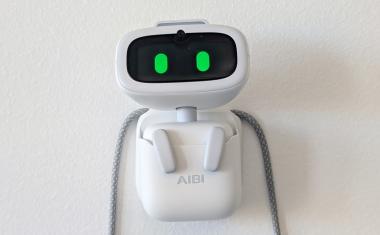Tracing Deviations
Optical lenses with centering errors do not necessarily have to be rejected as long as the exact deviation between the optical and the geometrical axis is known precisely. So far instruments with focus lenses and collimator are used for these tasks. However, the handling of these instruments is cumbersome if the type of lens often changes. Now, lens manufacturers are offered an alternative: a new centering tester with USB 2.0 camera.
Due to mechanical manufacturing steps like beveling, polishing, centering and coating, the fabrication of optical lenses is complex and often leads to so-called centering errors. Centering errors indicate the deviation of the optical axis from the geometrical axis and are due to defects in manufacturing while processing the boundary of a lens. The geometrical axis (g in fig. 1) is the axis of symmetry of the cylindrical lens boundary, while the optical axis (o in fig. 1) of lenses with spherical surfaces, for example, results from a line through both centers of curvature of the spherical lens surface areas.
The exact determination of the axis' deviation can avoid the lenses' rejection. Up to now, instruments which use a suitable focus lens and a collimator - a device that narrows a beam - and focus a reticle on the center of curvature of the test surface, are widely used. The handling of these gauges can be a disadvantage if the type of lens often changes. That's why Schneider-Kreuznach looked for a solution with a higher precision and better handling and developed a gauge based on the reflection method.
The Reflection Method
In the first step of the method the lens to be measured is mounted on the lens adapter and a drive mechanism turns the lens. An illumination device, containing light source and lens, lights the aperture 1 (fig. 2). The projection lens focuses the aperture 1 on the reflecting surface of the test piece. From there, the reflected light beam will arrive at the optical receiver which focuses the image of aperture 1 into aperture 3. Behind aperture 1 in the direction of the light, there is aperture 2. This aperture is wider than the first aperture. Behind aperture 3 in the direction of the light, an image sensor is positioned in such a way that the camera sensor is located in the plane of a real image of aperture 2. In the next step, the shift on the camera sensor of the center of energy in the image of aperture 2 is measured while the lens is turning. If a centering error exists on the surface of the test piece compared to the rotation axis of the lens, the light spot will move on the camera sensor.
Optimizing the Gauge
The first generation of the centering tester was based on a conventional camera/frame grabber solution. To simplify the latest generation of instruments, however, the latter should give way to a solution using a digital USB camera. To keep the basic design of the device Schneider-Kreuznach needed a small, flexible solution with high image quality and found the Matrix Vision's single-board model of the mvBlueFox camera. With a length and width of only 38.8 mm and a maximum height of 34 mm, the module fitted the given profile. Not only does this camera have an additional image memory of 8 MByte for buffered image transfer, the quality of its very low-noise images also convinced.
A Dream Team
The instrument and camera form a perfect team which, with a precision of 0.01 angular minutes, meets the highest demands. Centering errors are measured according to ISO 10110 without the need to know any lens data (radius, focal length, etc.) as others methods do. In combination with aperture 3 as an effective spatial filter, the alignment of projector and receiver with an angle of ±20° makes it possible to get a high separation effect during probing of the optical surface. It is also possible to measure lenses with a center thickness of 0.4 mm without any problems. Given that the tester is equipped with two measuring heads, two mvBlueFox-M modules are used. Therefore, lenses with two lens surfaces can be measured on both sides without the need to turn the lens over.










